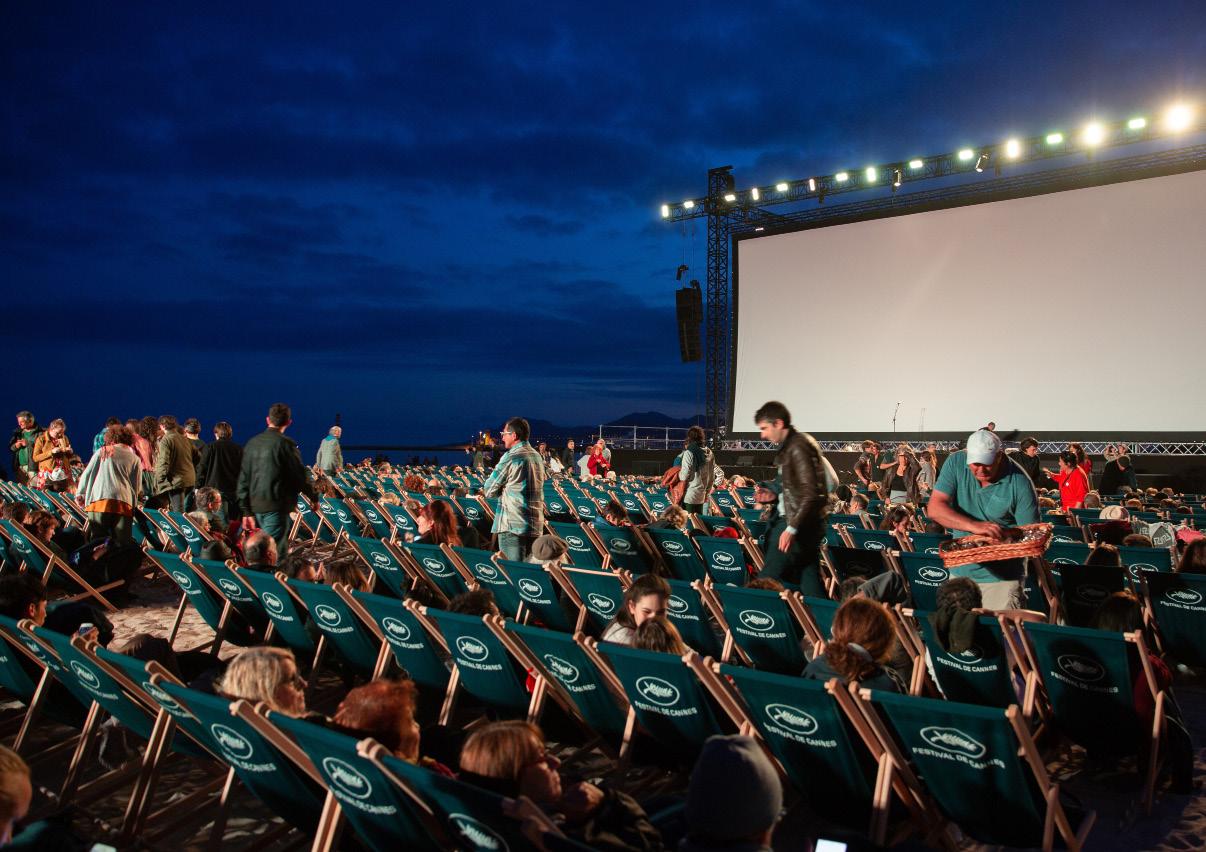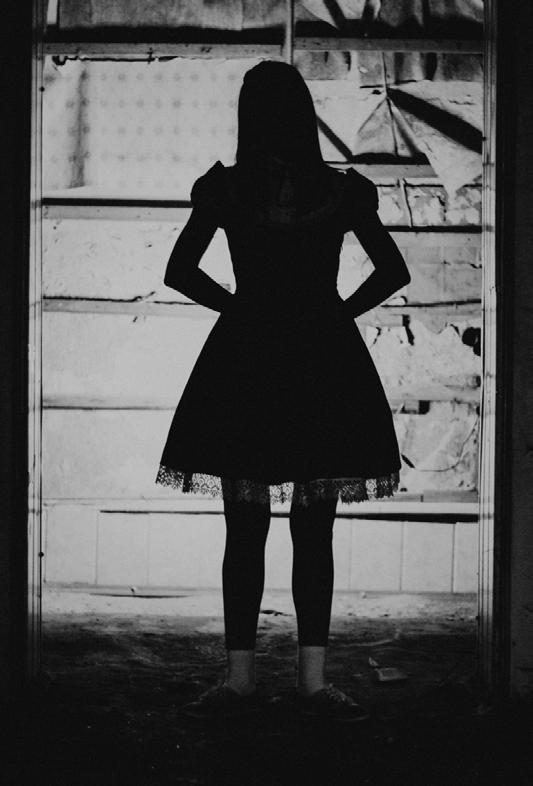
11 minute read
Entertainment
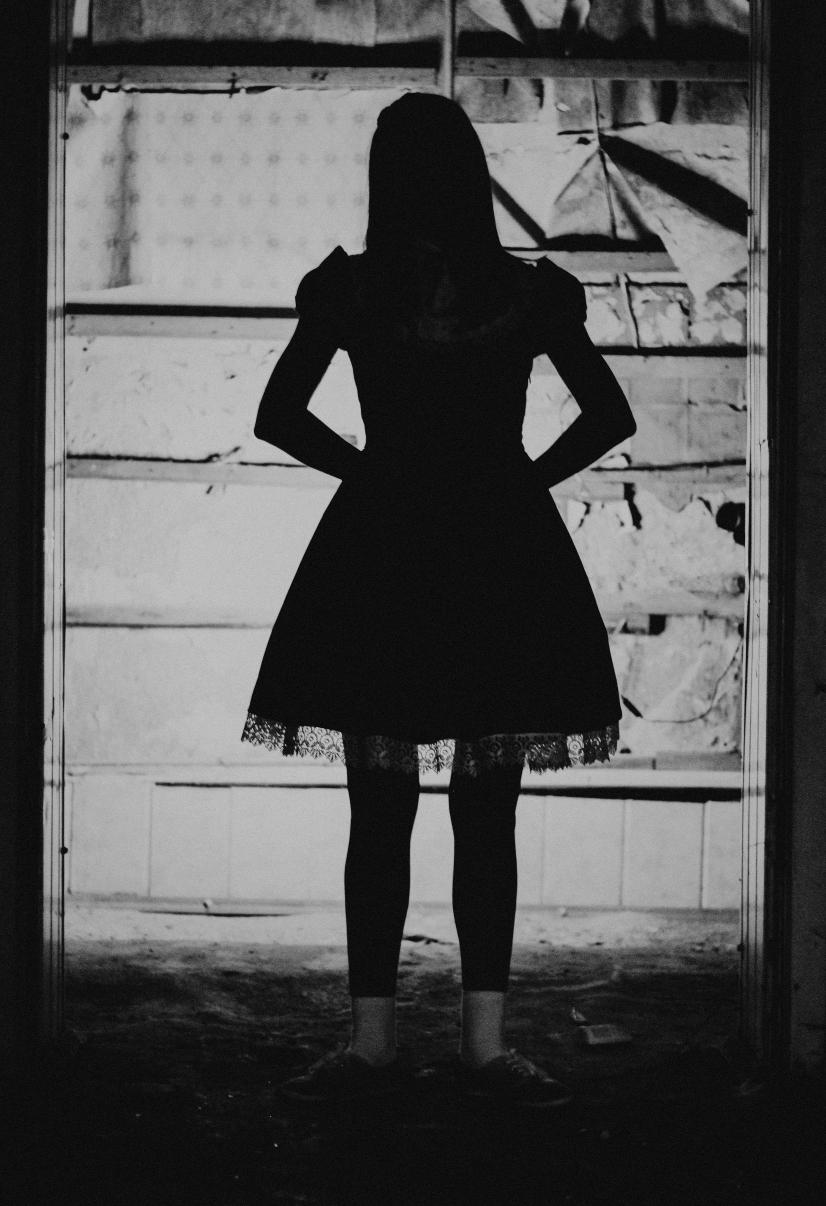

Advertisement
Enter tainment
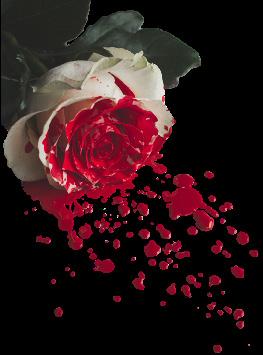
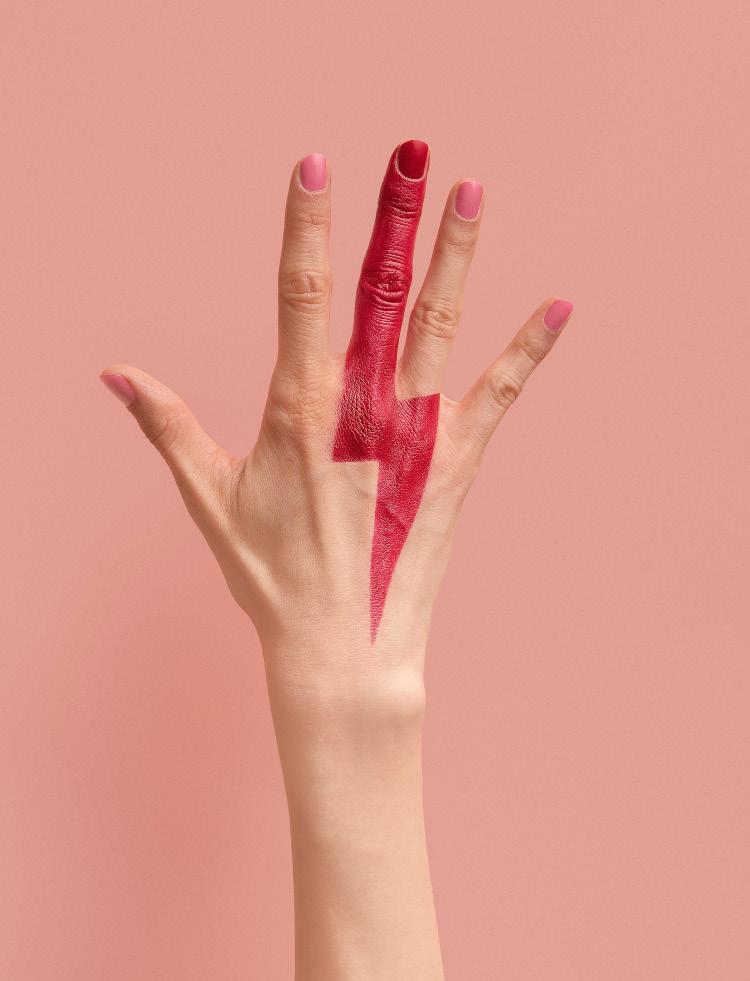
Total Annihilation & Teenage Angst: Carrie Review
CW – domestic abuse, violence Spoilers ahead!
Being seventeen is the worst, but at least your prom wasn’t smashed to pieces by a girl in a telekinetic rage. Founding Fellas Produc- tions recently brought Carrie to the Oxford Playhouse, this being a musical adaptation of Stephen King’s novel of the same name. Directed by Ellie Cooper, Carrie was a sensational mix of upbeat musical numbers and moments of horror, all showing the turmoil of being young and figuring out where to go in life.
King’s classic horror novel tells the story of Carrie White, a socially awkward teenage girl raised by a fanatically religious mother. One fateful prom night, the school bullies play a traumatizing prank on Carrie, and she unleashes supernatural destruction. Harriet Nokes starred as Carrie, bringing to life a shy teenager who tries to keep her head down, but is all the while brimming with anger and frustration towards her classmates, her mother, and her life. Nokes excelled in portraying Carrie’s complex persona; the audience saw the other side of the character the moment her first solo began with the song “Carrie”. Nokes’s powerful belting voice was perfect to depict the potential that Carrie is holding back.
The show also starred Gianna Foster as Sue (played by Grace Olusola on alternate nights), who is ashamed of her part in bullying Carrie and sets out to make amends. There were some moments where Foster portrayed
Abigail Stevens
Sue as confrontational where
I thought it would’ve made more sense for her to be hesitant, yet she convincingly presented Sue’s moral dilemma. Grace de Souza was at home in the spotlight as Chris, the most popular girl in school and the main bully. Chris doesn’t have a lot of characteristics besides being mean, so the only way to play her is to bring lots of personality to the role and delight in her nastiness, which de Souza accomplished. Chris had one moment, during a reprise of “The World According to Chris”,
where it seemed like she is slightly saddened by her own world view. The moment of self-doubt was completely subtextual, only made clear by slower music and de Souza’s superb acting.
The three main teenage girls depict the internal conflict which comes with deciding what kind of woman they want to be: Carrie wants to put herself out there and stop hiding, Sue wants to be kinder, and Chris is resolved to be cruel so she will always be on top. Meanwhile, the adult woman who has always loomed large in Carrie is of course Carrie’s mother, Margaret. Eleanor Dunlop’s portrayal was completely terrifying; she also has an incredibly strong voice that aided in creating a tyrannical character. In contrast to Carrie’s abusive mother is the gym teacher Ms. Gardener, who provides Carrie with friendly support. This is a character I did not expect to stand out in the show, but Beth Ranasinghe gave a spectacular performance as a funny, no-bullshit woman who is still happy to share life lessons with a younger girl.
Luke Nixon and Peter
Todd were both amaz-
ing as the main male characters of the show: Sue’s kind boyfriend Tommy, who takes Carrie to prom as a favour to Sue, and Chris’s delinquent boyfriend Billy. The production was rounded out with a talented ensemble, with each person on stage giving the same effort as if they were the lead and developing a unique persona. Right from the beginning, the musical talent of the cast and orchestra, led by musical director Beth “Fitz” Fitzpatrick, hits the audience in the most wonderful way. During the first number (“In”), the cast annihilates the audience with powerful voices, perfectly arranged harmonies, and impressive choreography. Choreographer Vanessa Silva created musical numbers which were fun to watch and let the actors show their characters’ personalities.
The sets were deceptively simple; before the show began, when I was staring at a stage with a colourless staircase and balcony, my first impression was that it wasn’t going to do much to capture the tone of the show. However, added set pieces and amazing lighting design helped create several different locations. Brightly coloured lighting was used for the scenes with the students and extra decorations were added between acts for the prom sequence. Meanwhile, the scenes in Carrie’s house had minimal, dimmer lights to capture the dark and dreary home. The transitions between locations were smooth and flawless, using the ensemble cast to move things around while they were singing. As far as the costumes went, I guess the setting for the show could be anytime in the later 20th century, but the students’ clothes make it clear that this is the 21st, making it more relevant (and more terrifying) for today’s teenagers.
Carrie was a technically and musically beautiful production with lots of teenage angst, against which I do not have a lot to critique. I could feel the same explosive energy coming from everyone on stage, because sometimes life is too much, and you just need to start smashing things. It was a fun way to spend a Saturday night and remind myself how glad I am that high school is over.
Yii-Jen Deng
We both brought silly books to Oxford interviews, my friend and I, though I only remember hers – it was Milly-Molly-Mandy. The old book was in comic contrast with the masses of scribbled-over pages, the fat textbooks on economics, and the reader herself, streaking through political anecdotes in an exhilarated frenzy. I’d never read Milly-Molly-Mandy myself, but even the name alone made me smile; there is something about those old, much-loved books, which suggests comfort, like a hug. That was three years ago. As exam season wears on, hopefully such books can help to keep one sane. I will not be graduating this year, but I re-learnt during rustication the abiding power of a good book – personally my alternative when sertraline is too expensive, though it may not work for everyone. These are mostly classics, and therefore more findable in libraries.
Nostalgic books you read as a child are often the first that come to mind. Some work better than others. Neil Gaiman once observed that ‘Whatever I loved about Enid Blyton isn’t there when I go back as an adult’, which is quite true – it’s difficult not to notice details that age badly, such as Blyton’s portrayals of traveller people in Five Go Off in a Caravan. At the same time, she’s good at capturing the excitement of escape, whether it’s running away to live on an island or exploring lands atop the Faraway Tree. Perhaps her books are better in small doses.
The Harry Potter series would be another obvious choice, but a children’s classic that deserves more readers is Dodie Smith’s The Starlight Barking, which is so wonderfully ridiculous – involving telepathic flying dogs, including a dalmatian called Cadpig who takes over Downing Street (perhaps preferable to our current setup…). A sequel to her famous, Disneyfied novel The Hundred and One Dalmatians, ‘The Starlight Barking’ offers an idiosyncratic adventure story with plenty of crazy magic. On the flip side, there’s apocalyptic fiction – John Wyndham’s The Day of the Triffids gives you giant walking plants that eat people. It’s absurd enough not to be frightening, and allows you to imagine yourself running away from allconsuming monsters in a way you never can with exams.
There ought to be a category of simply ‘wholesome’ books with happy endings. Miss Pettigrew Lives for a Day by Winifred Watson is a fun 1930s fairytale-like novel, if Cinderella were a povertystricken governess, and her fairy godmother a nightclub singer with multiple lovers. Watson’s novel is sparkling comedy with a playful, sympathetic eye for eccentric characters. A quieter, but no less endearing novel would be Tove Jansson’s The Summer Book – the perfect read for the long vac, with its pensive portrait of a child and her grandmother, passing a timeless summer on an island. It’s a book where nothing much happens and yet everything does; I wonder what you would make of it all.
There’s something vital and transporting in books. The line – ‘Whimsical soft-centred happy-all-the-way-through novels’ – comes from UA Fanthorpe’s poem ‘A Minor Role’. It’s not one of my favourite poems, though the line stuck with me after studying it at A-level, with its suggestion of books as chocolates: ‘soft-centred’. The poem presents someone shuffling through the means of finding comfort when life seems rather foolish, and there’s a tone of self-deprecation amidst all the hyphens, a consciousness of frivolity. What can whimsical books do, in the end? Why try to escape? But then we have that other implication of ‘soft-centred’, in the sense of carefully centring yourself, setting aside a space to breathe. If you need to breathe in an occult murder mystery in fairyland, go, there’s a book for it (see Hope Mirrlee’s Lud-in-the-Mist!). This may be an indulgence, but we all deserve the extra chocolate at times.

Image credits: Jamie Street via Unsplash
A step up to heaven?
Overview of Cannes Film Festival Duoya Li
The 75th Cannes Film Festival has returned this May with its pre-pandemic glamour, but the film industry as well as the world are never the same. The official poster is just as blue as the summer sky of the French Riviera: a tribute to The Truman Show, Jim Carrey climbs up a staircase amidst dreamy white clouds in the azure sky, hand reaching up to the large 75 – an important birthday for this international film festival born in the gloom of the war at this critical moment to speak for freedom and hope. While the festival has presented a wide range of talented films, there have also been turbulences on the red carpet. This year’s official selection contains virtuoso cinematography as well as diversification of perspectives. Ruben Östlund wins his second Palme d’Or with Triangle of Sadness, a poignantly satirical comedy targeting the super-rich on a luxury cruise trip that goes wrong. With dark humour and awkward situations, social hierarchy is laid bare under the tropical sun. On the other hand, Close (directed by Lukas Dhont) wins the Grand Prix (joint with Stars at Noon by Claire Denis) with a story of an intimate friendship between two young boys. Korean cinema also achieves great success: Park Chan-wook is awarded Best Director for Decision to Leave, a seemingly predictable plot of detective falling in love with suspect is treated with fresh energy, so that the female suspect liberates herself from the male gaze. Song Kang-ho has won Best Actor with his role in Broker, adaptation of an originally Japanese story about two men who set up a baby box and look for good buyers on the adoption black market.
Given the political situation in Ukraine, the festival declared a clean cut from any member associated with the
Russian government back in
March, but this does not extend to the Russian cultural sphere, as the dissident director Kirill Serebrennikov brings Tchaikovsky’s Wife to the official selection, though not without controversy. On the other hand, the selection for Un Certain Regard includes
Butterfly Vision, a Ukrainian film very much reflecting the current turmoil. The documentary Mariupol 2 also enters the festival, which is the best tribute paid to its Lithuanian director Mantas Kvedaravičius, who was killed in April in Mariupol. Some Ukrainian filmmakers have protested against social media censorship on the red carpet, covering their faces with a sign for sensitive content, while a woman broke into the ceremony with blue and yellow paint to protest against rapes committed on Ukrainians. As a prestigious film festival, Cannes is associated with glamour and often perceived as far-removed from the rest of the world, but it has always been about cultural representation, from the very beginning: Cannes Film Festival was initially proposed in 1938 since the Venice Film Festival became visibly partial under fascist rule. There are many international voices telling their stories of struggle: the Iranian actress Zahra Amir Ebrahimi is awarded Best Actress for her role in Holy Spider, a film about the serial killings of sex workers in Mashhad; we witness Joyland, the first Pakistani film selected by Cannes Festival; Boy from Heaven portrays the Egyptian political and religious tensions; the winner of Prize of the 75th is Tori and Lokita, which features the life of two young refugees in Belgium.
The highlights of Cannes 2022 cannot be listed in full. From Tom Cruise’s performance in Top Gun and Baz Luhrmann’s new film on Elvis, to the many film icons from the hosting country such as Marion Cotillard (Brother and Sister) and Léa Seydoux (Crimes of the Future), there is a lot to look out for in cinema. Of course, the films in the Cannes official selection are only the iceberg above water – there are so many more talents shining in the Cannes film market beyond what most people can see. If the first Tiktok short film competition did not have a smooth start, it nevertheless symbolises official recognition of a new trend, in an age where filmmaking ceases to be a privilege reserved for wealthy film companies.
On the whole, Cannes 2022 has gathered a range of masterful and promising films, diverse but not for diversity’s sake, which transform the silver screen into multifaceted mirrors, reflecting the tears and joys of human life. There has never been a cultural bubble separate from current issues, and I hope that on top of pure artistic enjoyment, these films bridge people together and show that the charm of the seventh art lies in cultural communication.
Image credits: Zhifei Zhou
